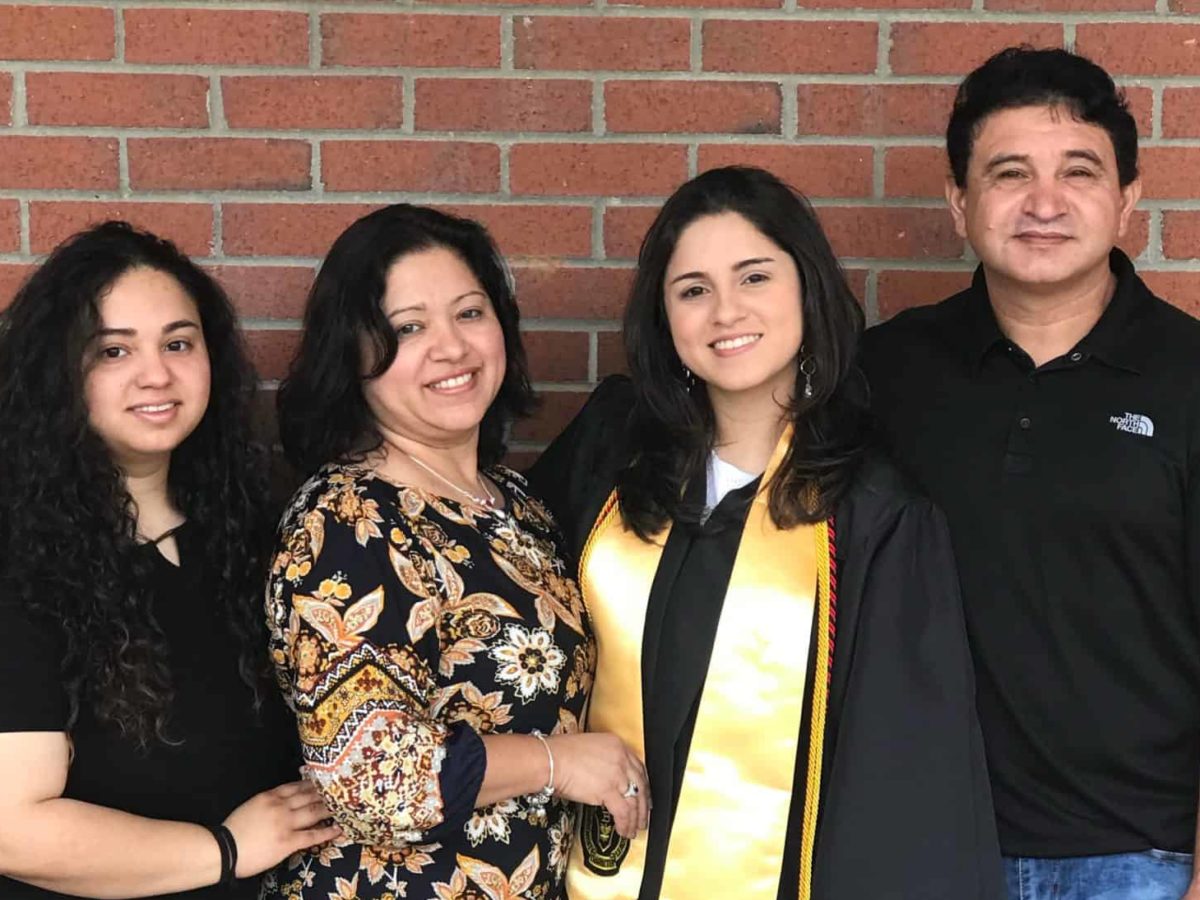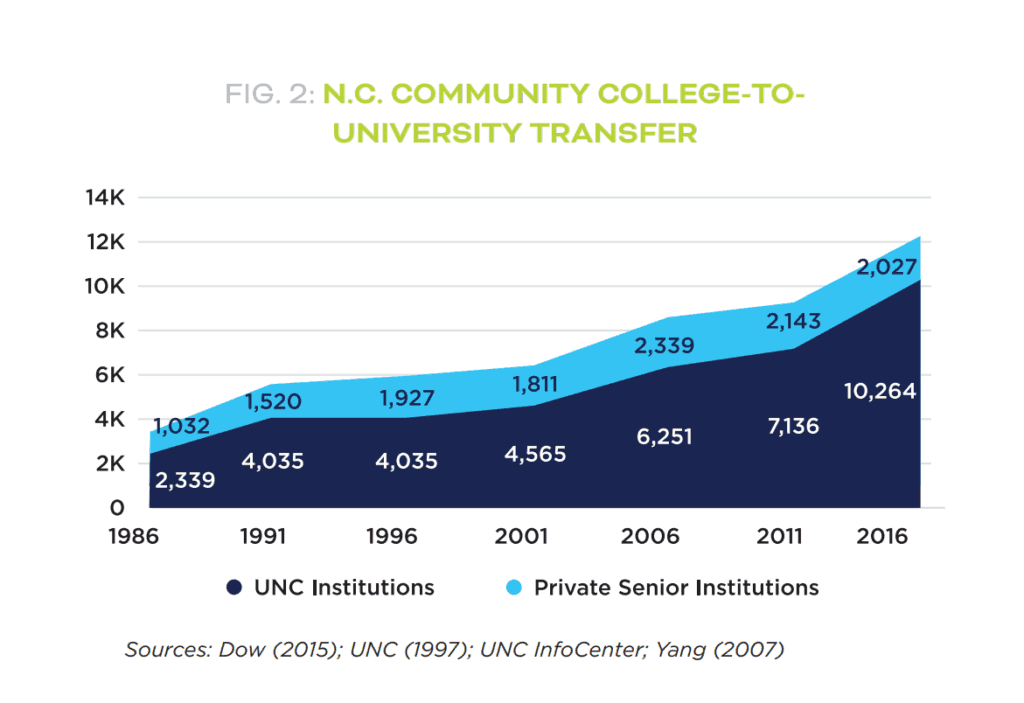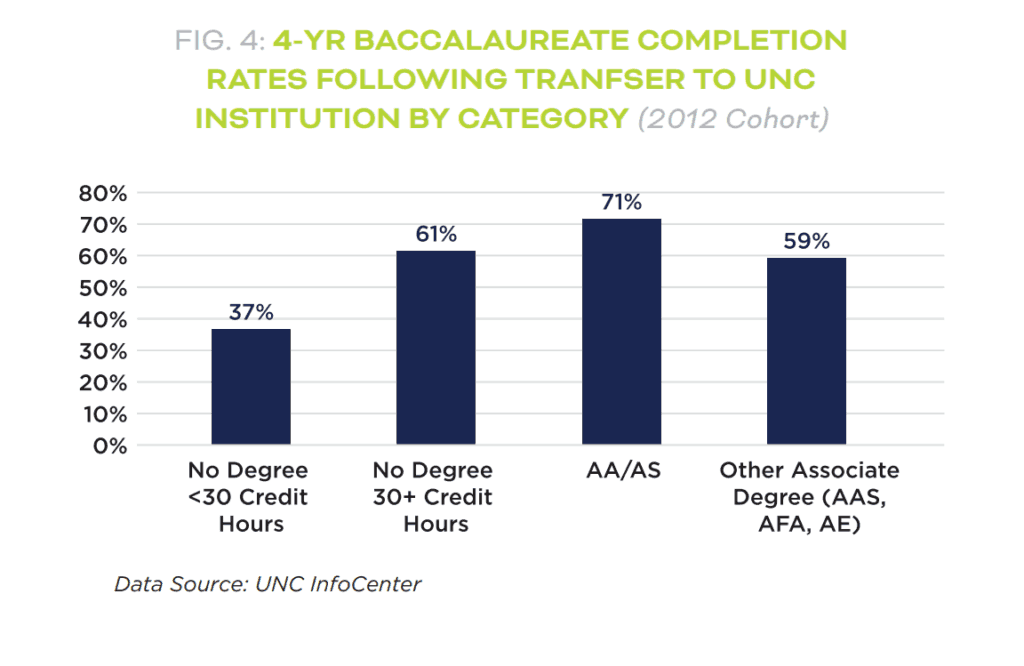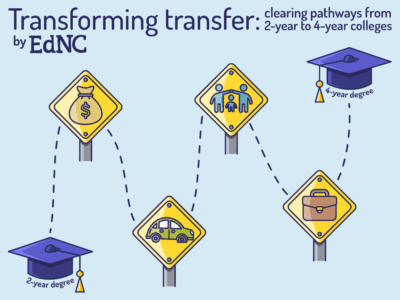

This is the third article in a series on the transfer experiences of North Carolina’s students between community colleges and four-year institutions. Click here to read the rest of the series.
“Transfer students too often have lower completion rates and follow inefficient pathways to the
baccalaureate.
While North Carolina has statewide articulation agreements, in order for students to have a seamless transition from the community college to the university, they need to know both their major and destination university early in the community college experience.”
— Mark D’Amico and Lisa Chapman, “Community College to University Transfer”
A policy brief — written by Mark D’Amico, a professor at UNC-Charlotte, and Lisa Chapman, former Chief Academic Officer for the NC Community College System and now president of Central Carolina Community College — informs the work of myFutureNC to close the attainment gap and reach the state goal of 2 million North Carolinians with a high-quality credential or postsecondary degree by 2030.
The foundation of an attainment goal is built on great institutions and strong policies. In North Carolina, we are fortunate to have 16 public universities, 36 independent colleges and universities, and 58 community colleges. When it comes to transfer policies, here are the questions:
- Do students have access to transfer opportunities?
- Do they successfully transfer?
- Is transfer efficient?
- Do they go on to earn a degree?
- Do they get a good job?
The transfer landscape
Transfers have increased by almost 250% in the past 20 years.
In fall 2018, 11,218 community college students transferred to UNC System schools.


Although 80% of community college students nationally intend to transfer, in North Carolina just 24% successfully transfer in six years, lower than the 33% who successfully transfer nationally.
Four out of five community college students who transfer go on to a public or private university — that’s called a vertical transfer — and 16% transfer between community colleges — that’s called a lateral transfer.
Most transfers enter the UNC System without a degree but with more than 30 hours of credit. However, transfers by students with an Associate of Arts (AA) or Associate of Science (AS) degree increased 118% from 2007-16 and the percentage is even higher for students transferring with other associate degrees.
North Carolina is just about on par nationally — 40% compared to 42% — with the percent of students who start community college, transfer successfully, and earn a bachelor’s degree within six years, known as transfer-out completion.


In February 2020, the Belk Center for Community College Leadership and Research released a report evaluating the 2014 revision to the Comprehensive Articulation Agreement (CAA) on three outcomes: bachelor’s degree completion, time to degree, and accumulation of excess credits at graduation. The report shows that bachelor’s degree completion rates among transfer students have declined from 65% completing for those entering a four-year institution in 2010 to just 22% completing for those who entered in 2017. To be fair, this number will likely increase as students who entered in 2017 complete their degree over the next few years.1
While the research found the 2014 revision did increase bachelor’s degree completion slightly for students covered under the CAA compared to those not covered, the report notes that the overall decline in bachelor’s degree completion is “particularly worrisome.”
“Such a situation certainly is a call to action for leaders at both community colleges and public four-year institutions alike as well as state-level policymakers,” the report notes.
The D’Amico and Chapman research highlights both promising practices and considerations for improvements.
Promising practices
Finding “an already robust transfer ecosystem in North Carolina,” the D’Amico and Chapman brief highlights four promising practices in North Carolina: articulation agreements, dual enrollment, early colleges, and reverse transfers.
Articulation agreements are a good thing, but as we learn more about student transfer patterns, they can also always be better. It’s also a good thing that continuous improvement is built into the articulation agreement process.
North Carolina’s statewide articulation agreement has been in place since 1997, and it was updated in 2014. An articulation agreement also governs transfers to 30 of our independent colleges and universities.
In North Carolina, dual enrollment allows students to take college courses while in high school at no charge. Known as Career and College Promise, 21,784 students participated in fall 2016.
Our state’s transfer landscape is strengthened by our Cooperative Innovative High Schools — usually known locally as early colleges (but others are called middle college and still others focus on career and technical education). Of 133 of these high schools, 118 partnered with a community college. In fall 2016, 15,930 students took classes at a community college through this initiative.
Reverse transfers allow students to transfer credits earned at a four-year institution to a community college to earn an associate degree.
Improving the transfer ecosystem
The brief offers six considerations to improve the transfer experiences and outcomes for students: removing pathway inefficiencies and enhancing credit mobility, universal course numbering, smoothing the process for other associate degree transfers, enhanced data quality and sharing, providing incentives to students and institutions for on-time degree completion, and much better and earlier communication.
The brief finds, “Even with the Comprehensive Articulation Agreement in place, inefficiency still occurs due to excess transfer of elective credits, credits in courses that do not meet pre-major requirements, changes in majors, late decision-making about major or college choice, and poor advising.” In addition, the brief highlights other states with best practices in place to enhance credit mobility.
According to research by the Education Commission of the States (which has been updated since the brief), 17 states have common course numbering for community colleges and universities.
The brief finds, “UNC transfer students with ‘other Associate degrees’ have increased by 134% in the past 10 years, and account for nearly 1 in 5 community college students making the transition.” But these students are less likely to earn a four-year degree and more likely to lose credits, and the transfer process needs to be smoothed and improved for these students.
Why does data matter? “Successful transfer is best facilitated when the student’s progress is consistently monitored by both partner institutions,” finds the brief. “Data-sharing agreements supported by technology that reaches across institutions could facilitate much more effective student advising. This allows the integration of supports and needed interventions when they are most effective, potentially reducing time-to-degree.”
The brief also considers the merits of incentives for students and institutions for on-time degree completion and considers the need for much better communication as early as middle school.
New research on early colleges by AIR finds students who attend early college are more likely to go to college and graduate with a degree, and early colleges benefit “students from different backgrounds, including students who are traditionally underrepresented in higher education.” Their cost analysis finds investing in early colleges pays off in the short and long term.
Because early colleges address many key priorities in education — from increasing instructional rigor and college-going culture to college and career readiness and postsecondary outcomes to reducing economic barriers to going to college and addressing the student debt crisis — AIR makes federal and state policy recommendations. Policymakers should, according to AIR’s research, learn more about early colleges initiatives, visit early colleges, create and expand early college access, increase funding and decrease legislative hurdles for early colleges.
“Educational attainment for community college students who transfer to public and private universities is imperative for meeting state workforce needs at the certificate, associate degree, and baccalaureate levels,” find D’Amico and Chapman.
Sanford “Sandy” Shugart, president of Valencia College in Orlando, Florida, talked about best practices in transfers at the 2019 Dallas Herring lecture.
“If you care about diversity and equity in this country’s future, transfer has to work,” Shugart said. “Has to work. And it’s been proven that it can.”
Here is a video of Shugart’s keynote and the research reports referenced in this article.



